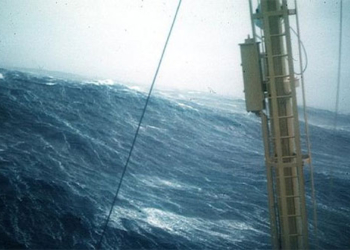Meteorologists warn that sea temperatures in some areas of the UK and Ireland could rise by up to 4 degrees Celsius, marking the most severe marine heatwave ever recorded.
According to New Scientist, the sea waters surrounding the UK and Ireland are experiencing a marine heatwave that could be considered the most serious on record globally.
In this context, meteorologists are alerting that the sea temperatures in certain regions of these two countries are currently 4 degrees Celsius above normal levels.

Seagrass near the Channel Islands (UK). Scientists indicate that high temperatures may lead to mass die-offs of kelp, seagrass, fish, and oysters – (Photo: PIX/ALAMY).
Over the past three months, surface sea temperatures in the North Atlantic have reached record highs. The average temperature recorded on June 17 was 23 degrees Celsius, which is 0.2 degrees Celsius higher than the previous record set in 2010.
According to the National Oceanic and Atmospheric Administration (NOAA) of the United States, the heat is concentrated in the waters surrounding the UK and Ireland, with a heatwave ranking of 4 (very high).
Researcher Rodney Forster from the University of Hull (UK) stated that the sea temperatures off the eastern coast of England and the western coast of Ireland are currently extremely warm.
The coast of Durham, off the town of Seaham (UK), recorded sea temperatures of 15 degrees Celsius on June 18, above the average annual level of 12 degrees Celsius. Some beaches in England are now reporting water temperatures near 20 degrees Celsius.
High sea temperatures can kill fish and other marine organisms and are also one of the factors contributing to the formation of stronger storms.
A 2023 report from the Environment Agency in the UK warns that persistently warming sea waters will increase the risk of Vibrio bacteria in shellfish – a bacterium that can cause illness in humans.
Several factors contribute to the warming of the North Atlantic sea waters. This year, weaker winds may have limited the amount of dust from the Sahara Desert reaching the area. Desert dust typically helps cool sea temperatures.
“Normally, airborne dust from the Sahara Desert helps cool the region by blocking some solar energy, but weaker-than-average winds have reduced the level of dust in the atmosphere, leading to higher sea temperatures,” said Professor Albert Klein Tank from the UK Met Office.
According to Professor Tank, climate change and the El Niño phenomenon occurring globally are also among the reasons for the warming sea waters.
Forster noted that the heatwave has intensified due to calm seas and warm weather, significantly raising surface sea temperatures over the past 10 days.





















































